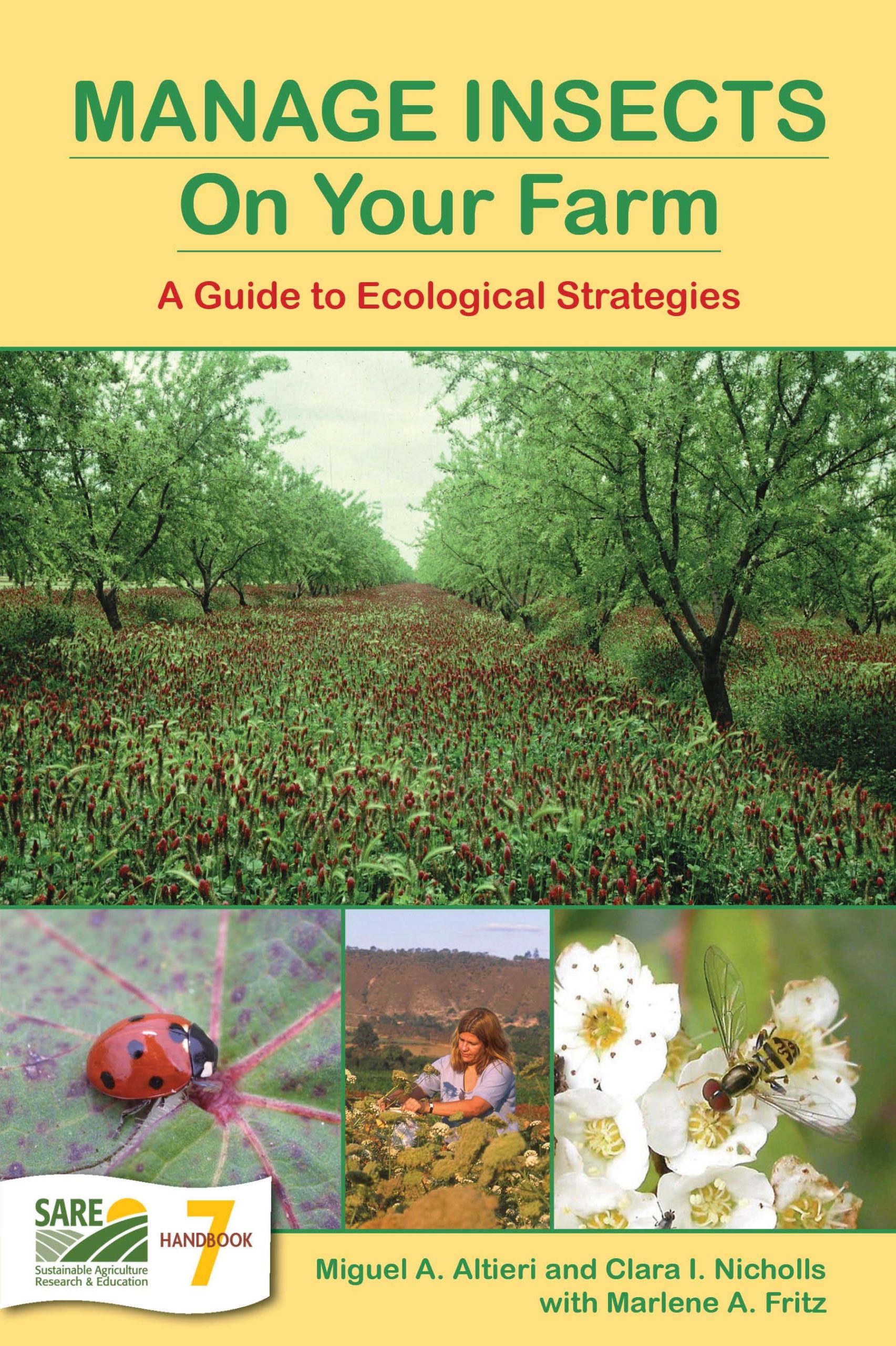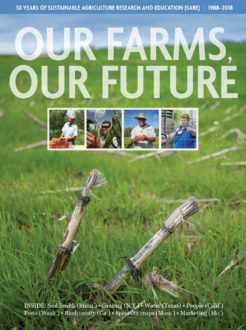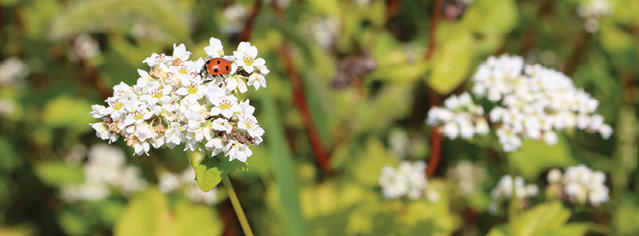Worldwide, pests damage more than 30 percent of crops, and due to ever-changing dynamics such as invasive species and pesticide resistance, the task of managing them remains difficult. In the United States, invasive species alone cause $13 billion in crop damage each year, and 160 herbicide-resistant weed species have been identified, the most of any country.
There is no silver bullet in pest management; to meet pest challenges, producers must employ an integrated range of tactics, many of which have benefits that extend beyond pest control and improve overall farm sustainability. Refining those practices that are successful, cost effective and less reliant on purchased inputs has long been a core focus of SARE-funded research.
One sustainable strategy is biological pest control, or creating an environment that supports the natural predators of pests. SARE-funded producers, researchers and educators are advancing biological control in both row crop and specialty crop systems, typically by promoting biodiversity in fields and field margins. (See the story, Habitat Restoration Brings Beneficial Insects and Fewer Pests to the Vineyard.)
Over the years, SARE grantees have also extensively researched cultural control practices—those that modify the growing environment to create disadvantages for pests. Key practices include crop rotation, intercropping, cover crops, selecting pest-resistant varieties and precision application of nutrients and water.
Other tools in the sustainable pest management toolbox include cultivation, mulching and other forms of physical control, and integrated pest management. Many SARE grantees are seeking to solve the unique challenges of organic no-till systems, which build soil health and control weeds without synthetic herbicides or cultivation.
By the Numbers - SARE Grants on Pests, 1988–2017
Getting the Word Out

SARE produces dozens of educational resources on a range of sustainable agriculture topics. Grantees produce even more with SARE funding. Here are just a few examples that address pests (or see all SARE resources on pest management):
Print: 8,935 | Online: 59,089
Print: 13,000 | Online: 128,109
Online only: 3,727
“Print” is copies distributed since the date of publication. “Online” is combined downloads and unique page views over a recent six-year period.
Visit the database of project reports to explore SARE-funded research on these topics.
![]()
491 grants | $17.9 million
![]()
517 grants | $24 million
![]()
122 grants | $3.8 million
![]()
288 grants | $14.2 million
![]()
171 grants | $4 million
![]()
181 grants | $7.1 million
![]()
141 grants | $6.1 million
![]()
287 grants | $8.5 million
1,412 grants | $55.5 million
Because some projects address more than one topic, the total is adjusted to remove duplicates.

